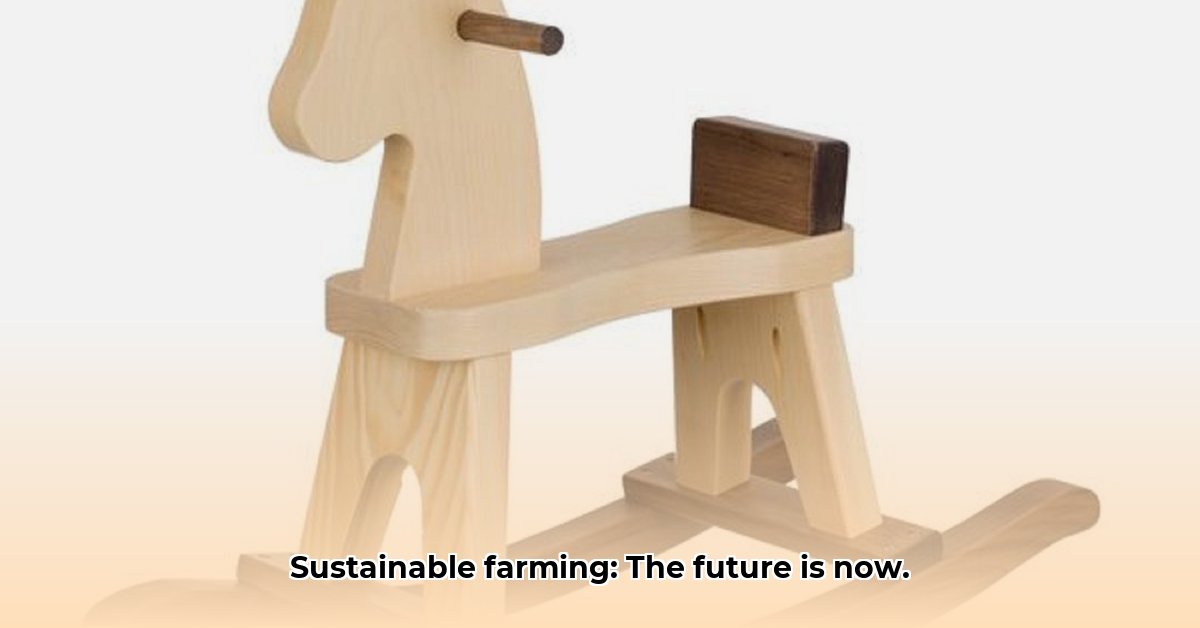
Sustainable agriculture is no longer a niche concept; it's a necessity for a thriving future. This article explores the key practices, technological advancements, and governmental support driving this crucial shift, providing actionable steps for farmers of all sizes to embrace sustainable methods. We'll examine how integrating these elements can lead to both environmental stewardship and economic prosperity. For more on the financial aspects, check out tractor costs.
Key Sustainable Practices: Building Blocks for a Resilient Farm
Sustainable farming practices aren't about radical overhauls; they're about building blocks—small changes with significant cumulative impacts. Here are four core principles:
1. Cover Cropping: Soil Health Enhancement
Cover cropping involves planting non-cash crops like legumes or rye to protect and enrich the soil. These plants prevent erosion, suppress weeds, and add valuable nutrients, leading to healthier soil supporting greater crop yields. Implementation involves selecting appropriate cover crops for your climate and soil type, planting them at the right time, and integrating them into your existing crop rotation. While requiring some initial planning, studies show a 30-40% increase in soil organic matter after several years of consistent cover cropping. What are the potential challenges? Choosing the wrong cover crop, difficulty in managing the cover crop's growth, and limited availability of seed varieties in certain areas.
2. Precision Agriculture: Optimizing Resource Use
Precision agriculture leverages technology like GPS-guided machinery, sensors, and data analytics to optimize resource allocation. This allows for targeted application of inputs such as fertilizers and water, minimizing waste and improving efficiency. Implementation involves investing in appropriate technology, collecting and analyzing data, and adjusting farm practices based on data insights. The initial investment can be significant, but many farmers report a 15-20% reduction in input costs within three years.
3. Crop Rotation: Diversifying for Resilience
Crop rotation involves alternating different crops in a field over time, benefiting both soil health and pest management. The diversification reduces the risk of pest and disease buildup, improves soil structure, and minimizes the need for pesticides. This systematic approach requires careful planning, understanding crop compatibility, and market demands, but can lead to more resilient and productive yields. Studies indicate a 10-15% increase in overall yields following a well-planned rotation plan.
4. Integrated Pest Management (IPM): A Holistic Approach
Integrated pest management (IPM) emphasizes holistic pest control, minimizing reliance on synthetic pesticides. This strategy integrates various techniques, such as biological pest control (using natural predators), crop rotation, and targeted pesticide application only when necessary. While requiring increased knowledge of pest life cycles and alternative control methods, IPM minimizes environmental impact and reduces health risks associated with pesticide use, delivering safer and healthier produce. This approach, while requiring more upfront training and planning, can reduce pesticide use by 50-75% over time.
The Economics of Sustainable Farming: Investments and Returns
While transitioning to sustainable agriculture requires an upfront investment, the long-term economic benefits can be substantial. Reduced input costs (less fertilizer, water, and pesticides), improved yields, and increased market demand for sustainably produced food compensate for initial expenses. However, careful planning and financial analysis are crucial. "The initial investment can be daunting," says Dr. Amelia Hernandez, Agricultural Economist at Cornell University, "but the long-term returns, considering the reduced risk of crop failure and access to premium markets, often make it a financially sound decision.” Furthermore, government support programs can significantly ease the transition.
Technological Advancements: Smart Farming in Action
Technology plays a pivotal role in sustainable agriculture. Precision farming tools, sensors, and data analytics offer farmers unprecedented insights into their operations. Drones provide aerial crop assessments, while AI-powered systems optimize irrigation and fertilization, leading to significant improvements in yield and resource efficiency. The initial investment cost can be a barrier, but the potential for long-term cost savings and yield improvements justify the investment for many farmers.
Government Support: Programs and Incentives
Numerous government programs offer financial and technical assistance to farmers adopting sustainable practices. Subsidies, tax breaks, and research funding incentivize the transition, making sustainable agriculture more accessible and attractive. Knowing which programs are available in your region is crucial. "Understanding and leveraging these programs is essential for success," adds Mr. David Lee, Director of the National Sustainable Agriculture Coalition. "They can significantly reduce the financial risk and smooth the transition to sustainable methods."
Actionable Steps for Sustainable Farming
Whether you're a small-scale farmer or a large operation, integrating sustainability requires a phased approach:
- Assess Your Current Practices: Evaluate your existing farming systems, identifying areas for improvement.
- Set Measurable Goals: Define specific, achievable targets for reducing input use and improving yields.
- Select Appropriate Practices: Choose sustainable techniques suited to your farm's context and resources. Start with one or two practices, then gradually expand.
- Seek Technical Assistance: Consult experts at your local agricultural extension office or through government resources.
- Explore Government Programs: Identify and apply for relevant subsidies and support programs in your region.
- Monitor and Adapt: Track your progress, analyze results, and adapt your strategies as needed.
Conclusion: Building a Sustainable Future
Sustainable agriculture is not just an environmental imperative; it's an economic opportunity. By integrating sustainable practices, leveraging technological advancements, and utilizing available government support, farmers can build more resilient, profitable, and environmentally responsible operations. The journey may require effort and investment, but the rewards – for both the planet and the farmer – are immeasurable. Let's work together to build a secure and sustainable food future for generations to come.